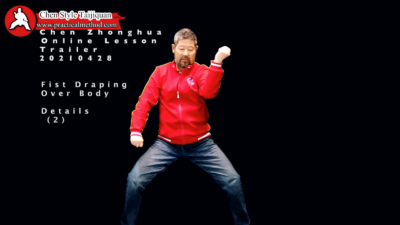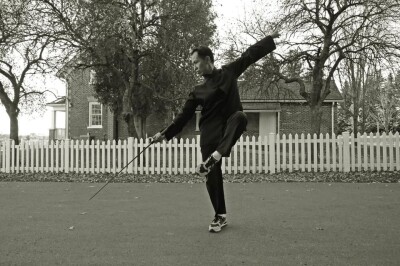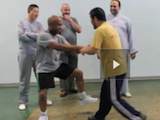
- Kua needs to turn over (tippie toe if needed to get maximum range of the kua turning over)
- Right hand-elbow-shoulder triangle must remain unchanged. This triangle plane must catch the opponent, like how an oar catches water one way but not the other.
- The right elbow going up is not just lifting the elbow. It is stretching the torso so much that it flips up the elbow. Shoulder must stay downwards.
- The right kua turns over as the right hand-elbow-shoulder triangle changes position.
- Left kua must open, and don’t let the left knee point to the ground. This is very difficult to do, so the instructor is likely not able to show this one.
- Central axis does not move.
- At the very last part of the movement, there is a stretch between the right elbow and the left elbow to catch the opponent, and then we rotate on the central axis, and this rotation being inside must be bigger than the outside movement to have power. This is an example of fajin when done quickly.






